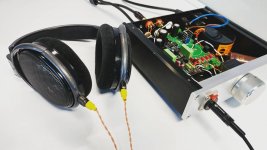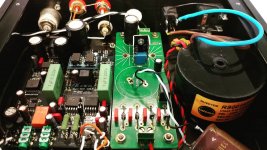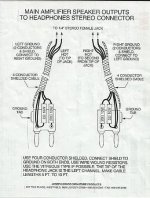I have been using my HD650 for a year at my office using headamp design based on opamp. if i recall my memory, i thought that i read somewhere that someone plug HD650 to class a amplifier F2J and other user connected it to 300B
i am always tempted to plug my cans to either J2/M2/SIT L'amp that i have but worried if i burn the voice coil
any advice to protect my cans? maybe adding parallel high power resistor?
thanks
i am always tempted to plug my cans to either J2/M2/SIT L'amp that i have but worried if i burn the voice coil
any advice to protect my cans? maybe adding parallel high power resistor?
thanks
Attachments
Last edited:
Ken Rockwell disagrees on the sensitivity - his measurements give 103dB @1V, 1kHz
Sennheiser HD 650 review
They are 300ohm cans, need more volts than the average. 2VRMS goes loud enough for me (but I have HD6XX which are essentially the same drivers).
Sennheiser HD 650 review
They are 300ohm cans, need more volts than the average. 2VRMS goes loud enough for me (but I have HD6XX which are essentially the same drivers).
being sinusitis and tinitus, I can't listen thru my cans on high level. IEM is already blacklisted for me, my eardrum can't stand it. i have many 10uf from oil to solen, i will try 50ufI'd worry more about your ears, since they will produce 115dB with only 1V input.
Any headphone can be damaged, but a parallel resistor won't help.
A coupling capacitor (50uF bipolar) will protect from DC due to amplifier failure.
good starting point, i might start with SIT which has lower gain. have tried connecting it to your amplifier? btw what is your headamp now? i have amb a20 but unfortunately its psu is not workingKen Rockwell disagrees on the sensitivity - his measurements give 103dB @1V, 1kHz
Sennheiser HD 650 review
They are 300ohm cans, need more volts than the average. 2VRMS goes loud enough for me (but I have HD6XX which are essentially the same drivers).
worried if i burn the voice coil
They can't be burned by most opamps since the relatively high resistance and relatively big diameter.
Say, with 12 V DC in case of amp malfunction will result in only 0,5 W heating.
Tubed designs could be potentially more disasterable due to high voltage, but they mostly have trafo at the output while OTL really needs some DC protection.
Burn them with a signal is a nonsense. Your brains first will be pressed out through nostrills.
any advice to protect my cans?
Any preferable relay-based DC protection.
You can get a SSR DC protect circuit that will protect your headphones from high DC. However, speaker amplifiers are capable of high transients which can blow a coil and neither DC protection nor capacitors for DC block will solve that. You almost want to use something like 6.8v (or whatever you feel is needed) Zener diodes in series back to back to shunt anything exceeding the Zener setpoint.
To properly connect headphones to speaker amps, you at first need a resistor divider. This will protect your headphones from excess power and improve the signal to noise ratio significantly. See attached.
On top of it, you can follow the adapter by a dc protection module made for headphones.
On top of it, you can follow the adapter by a dc protection module made for headphones.
Attachments
Project 100
I made Version 2 (2-ohm) of this power amp to headphone adapter, which works fine as long as your amp has low DC offset. DC blocking caps could be added if needed....
I made Version 2 (2-ohm) of this power amp to headphone adapter, which works fine as long as your amp has low DC offset. DC blocking caps could be added if needed....
Ken Rockwell disagrees on the sensitivity - his measurements give 103dB @1V, 1kHz
Sennheiser HD 650 review
They are 300ohm cans, need more volts than the average. 2VRMS goes loud enough for me (but I have HD6XX which are essentially the same drivers).
This made me laugh for a couple of reasons:
I also have HD650 and I'm building a headphone amplifier for them - I havent tested with anything other than a load resistor.
I used the quoted sensitivity I read somewhere (104.8dB/V or 100dB/mW and thought I need about 115dBSPL capability) and so I have been aiming for more voltage output than 2V...nearer the 4V level. (About 12.5 to 13dBV into 330R)
Ironically I might find that it's too much volume, when I have a listening test!
Last edited:
For me whether its enough volume depends on the kind of music. 90% of my musical diet is classical, for that I might appreciate having a tad more than 2VRMS but only on some recordings. For the rest (which would have lower crest factor) probably 1V would be plenty loud enough.
It is a waste of the performance of the Sennheiser HD650 for not giving it a dedicated head amp. There are a large number of reviews on the Sennheiser HD650. You can Google them for more information. The need to have a dedicated head amp to bring out the best of Sennheiser HD650 is generally accepted. But whether one can tell the difference between a dedicated head amp vs. the padded down power amplifier headphone out is entirely a personal matter.
For as long as I can remember, the consumer market receiver had ditch the headphone amplifier but not the headphone jack. The headphone jack was connected to the power amplifier output through a pair of padded down resistors of a few hundred ohms. It has plenty of power to drive any headphone, but destroy the transient response and the sound stage of the headphone.
When I listen to headphone, the 2 important factors are:
(1) Long session comfort which means light weight and open sound.
(2) A 3 dimensional sound stage which will not make the music 2 dimensional or all in the head.
Many power amplifier or receiver do not have dedicated headphone amp circuit. They use a padding resistor of a few hundred ohms to tap the speaker output for the headphone jack. The headphone needs only milli-watt of power, the padding resistor is necessary for the user not to hear the noise. As a result, the output jack has plenty of driving power, but gets very poor transient response and no sound staging.
To me, the depth of sound stage is particularly important in headphone listening. It needs a good phone and a good dedicated headphone amp to bring it out. Otherwise, the music becomes 2 dimensional. Just my 2 cents.
An IC input based headphone amp can sound very good too. But it needs the circuit topology and power supply to be all top notched.
"WHAMMY" Pass DIY headphone amp guide
For the ultimate performance, you can get the Pass Labs HPA-1 Headphone Amp at under $4000.
I use a highly modified DIY amplifier described here.
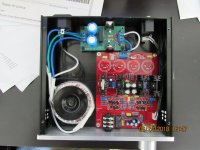
For as long as I can remember, the consumer market receiver had ditch the headphone amplifier but not the headphone jack. The headphone jack was connected to the power amplifier output through a pair of padded down resistors of a few hundred ohms. It has plenty of power to drive any headphone, but destroy the transient response and the sound stage of the headphone.
When I listen to headphone, the 2 important factors are:
(1) Long session comfort which means light weight and open sound.
(2) A 3 dimensional sound stage which will not make the music 2 dimensional or all in the head.
Many power amplifier or receiver do not have dedicated headphone amp circuit. They use a padding resistor of a few hundred ohms to tap the speaker output for the headphone jack. The headphone needs only milli-watt of power, the padding resistor is necessary for the user not to hear the noise. As a result, the output jack has plenty of driving power, but gets very poor transient response and no sound staging.
To me, the depth of sound stage is particularly important in headphone listening. It needs a good phone and a good dedicated headphone amp to bring it out. Otherwise, the music becomes 2 dimensional. Just my 2 cents.
An IC input based headphone amp can sound very good too. But it needs the circuit topology and power supply to be all top notched.
"WHAMMY" Pass DIY headphone amp guide
For the ultimate performance, you can get the Pass Labs HPA-1 Headphone Amp at under $4000.
I use a highly modified DIY amplifier described here.

Last edited:
Depth of sound stage and imaging are best with SE Class A amps with zero global feedback. They make a huge difference IMO. No more than two transistors is needed really.
I just finished the Hakuin amp and it sounds magnificent. Better than a MOSFET follower. This is 2SK209BL and 2SA1837 output in CFP.
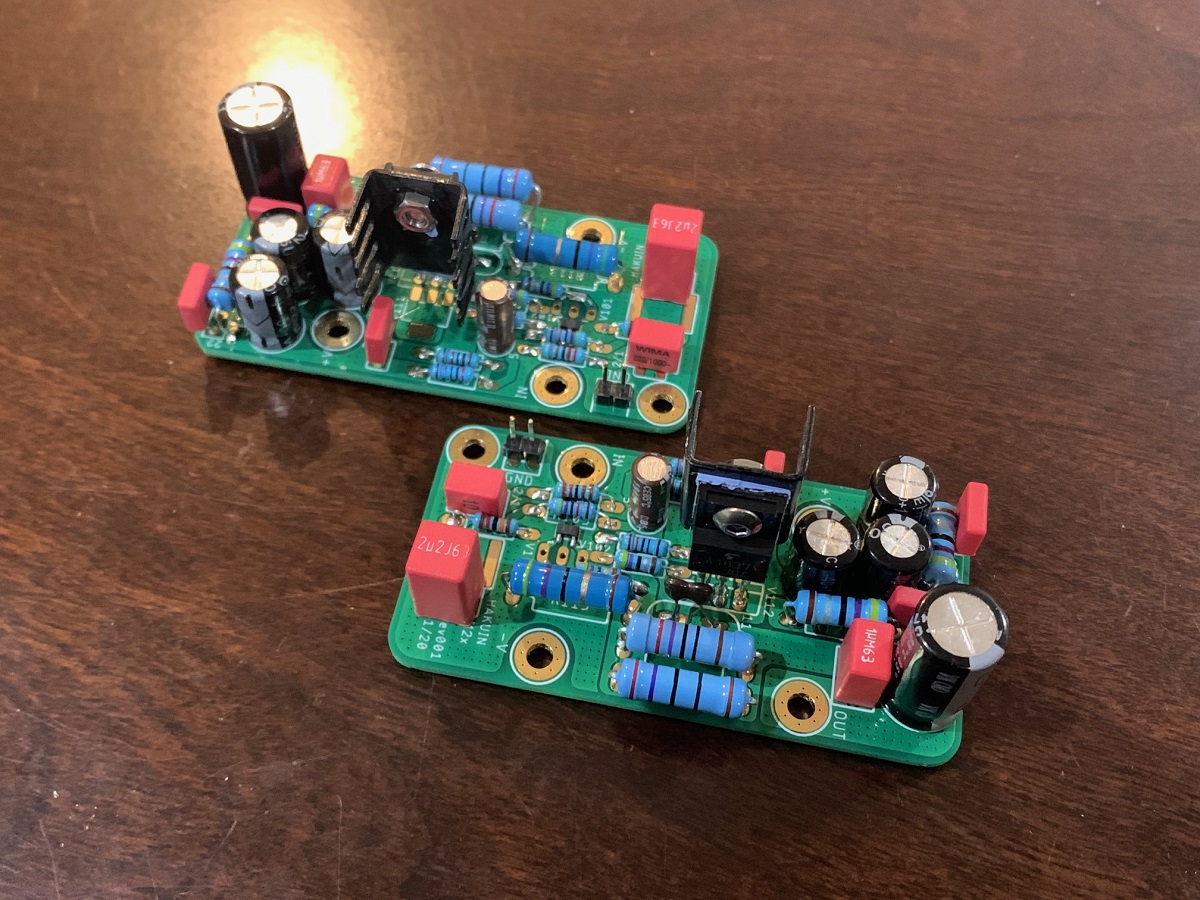
I just finished the Hakuin amp and it sounds magnificent. Better than a MOSFET follower. This is 2SK209BL and 2SA1837 output in CFP.
voltage divider is a good advice that i will incorporate along with relay dc protection. however new headamp might not an option for me, already too many amplifier 
but i think that with low gain SIT / F2J with only 10dB, headroom might not become an issue because no need for voltage divider. maybe only extra heat issue
but i think that with low gain SIT / F2J with only 10dB, headroom might not become an issue because no need for voltage divider. maybe only extra heat issue
- Status
- This old topic is closed. If you want to reopen this topic, contact a moderator using the "Report Post" button.
- Home
- Amplifiers
- Headphone Systems
- Sennheiser HD650 driven by class a amplifer?
